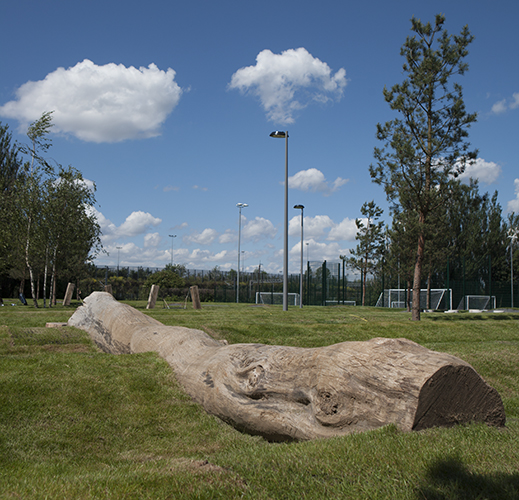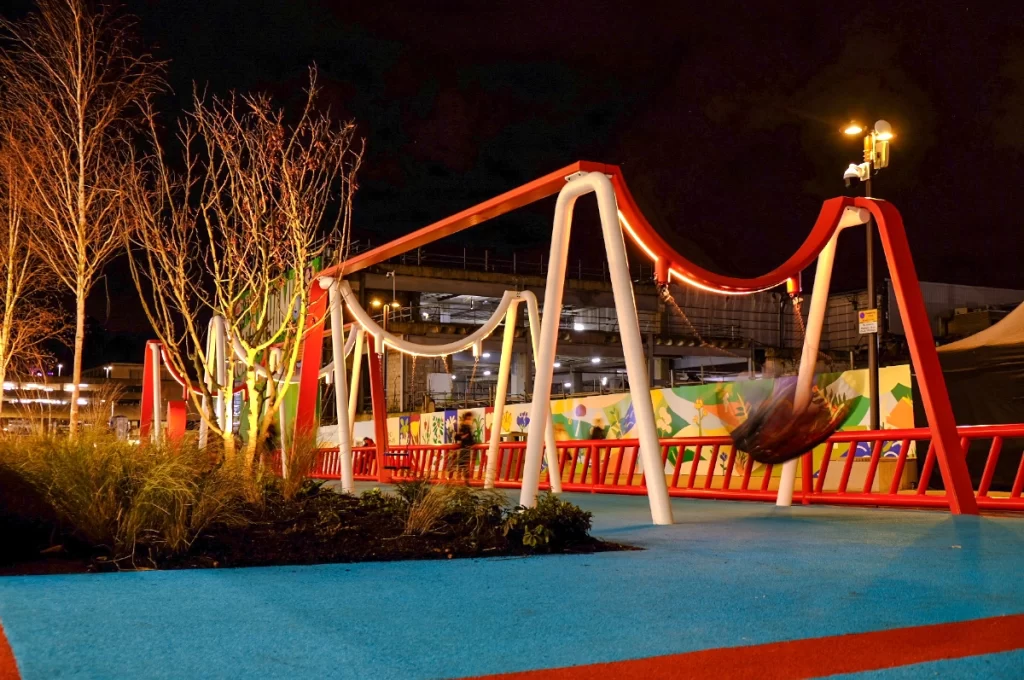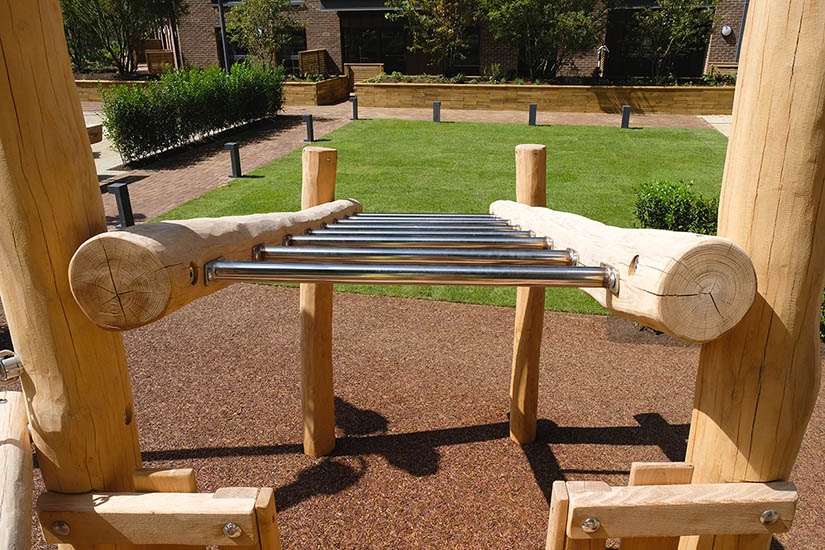In the ever-evolving landscape of childhood play, the integration of technology into traditional playground equipment sparks a compelling debate. On one hand, proponents argue that embracing technology enriches children’s play experiences, while opponents advocate for preserving screen-free environments to foster physical and social development.
 Advocates for integrating technology argue that playground equipment should evolve alongside modern advancements. With the proliferation of smartphones, tablets, and gaming consoles, children are increasingly accustomed to digital interfaces. Incorporating technology into playground equipment not only caters to their interests but also offers innovative ways to engage and educate. Perhaps integrating technology would inspire children that generally glued to their screens to get outside and interact with the real world in a more hybrid way.
Advocates for integrating technology argue that playground equipment should evolve alongside modern advancements. With the proliferation of smartphones, tablets, and gaming consoles, children are increasingly accustomed to digital interfaces. Incorporating technology into playground equipment not only caters to their interests but also offers innovative ways to engage and educate. Perhaps integrating technology would inspire children that generally glued to their screens to get outside and interact with the real world in a more hybrid way.
Moreover, technology-enhanced equipment can bridge the gap between indoor and outdoor play. Interactive features such as augmented reality games or electronic sensors can encourage children to explore the natural environment while enjoying the benefits of digital entertainment.
Some electric equipment on offer combines fitness, sports, or physical therapy create a new kind of physical activity that offers challenge, feedback on your progress, and very often competition. Physical activity becomes fun, motivating and measurable. Technology like this can make a very positive difference with the physical mental health of children.
However, detractors raise valid concerns about the potential drawbacks of technology-driven play. Excessive screen time has become a prevalent issue, with studies showing that children spend an average of 7 hours per day on screens, leading to various health implications such as obesity, sleep disturbances, and diminished social skills.
Furthermore, traditional playgrounds provide invaluable opportunities for physical activity and social interaction, essential for children’s holistic development. Climbing, swinging, and running promote gross motor skills, coordination, and spatial awareness, while spontaneous games foster cooperation, communication, and creativity.
 Advocates for screen-free play argue that children need unstructured time away from screens to cultivate imagination, resilience, and interpersonal relationships. By immersing themselves in unstructured outdoor play, children learn to navigate risks, solve problems, and interact with the physical world in meaningful ways.
Advocates for screen-free play argue that children need unstructured time away from screens to cultivate imagination, resilience, and interpersonal relationships. By immersing themselves in unstructured outdoor play, children learn to navigate risks, solve problems, and interact with the physical world in meaningful ways.
We have recently installed LED lighting into the frames of swings allowing them to be used all year round (even in the traditional British cold dark winters). This lighting technology did not exist a few years ago and really increases the play value of the playground where they were installed. As a business we will be incorporating more of this into our wooden playground equipment in the future. A great blend of natural materials and modern technology.
Incorporating technology into playground equipment is not further inherently detrimental, but rather, requires thoughtful consideration and balance. Designers and educators must prioritise children’s well-being by offering diverse play experiences that cater to different interests and developmental needs. When the durability of playground equipment plays such an important part of affordability, introducing complicated electronics may be a good reason not to go in that direction.

Ultimately, the goal is not to eradicate technology from play spaces but to strike a harmonious balance between digital and traditional forms of play. By fostering environments that encourage both physical activity and technological exploration, we can empower children to thrive in a rapidly evolving world while preserving the joys of childhood play. As technology advises at an extreme rate. Who knows what the next breakthrough technology might be. Perhaps screens will not exist and handsfree technological interaction might be the thing. A more seamless and amalgamated crossover might be more possible.
In conclusion, the question of whether technology should be incorporated into playground equipment is multifaceted, with valid arguments on both sides. By weighing the benefits and drawbacks, we can chart a course that embraces innovation while safeguarding the fundamental principles of play – imagination, discovery, and connection. The play industry seems to roll in cycles, falling in and out of love with a styles and materials. The playground, however, should always offer children the resources that are most important. These are to improve the cognitive, physical, social, and emotional well-being of children. If a playground can off this, it will remain one of the most valuable places for children.



